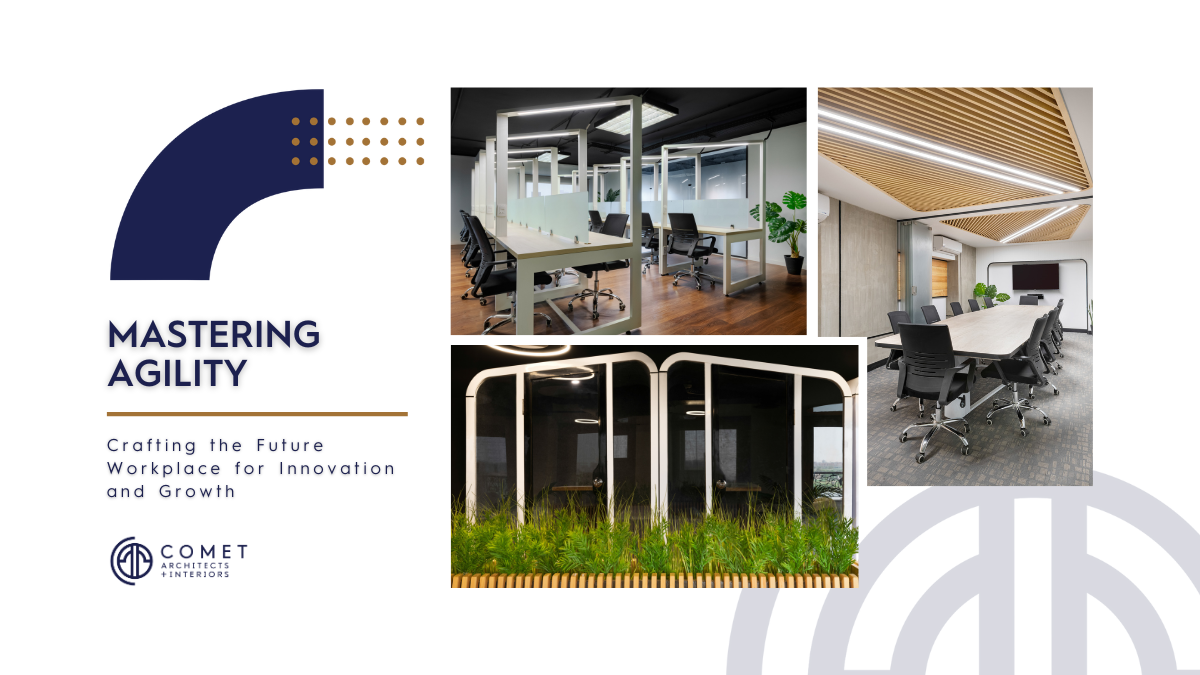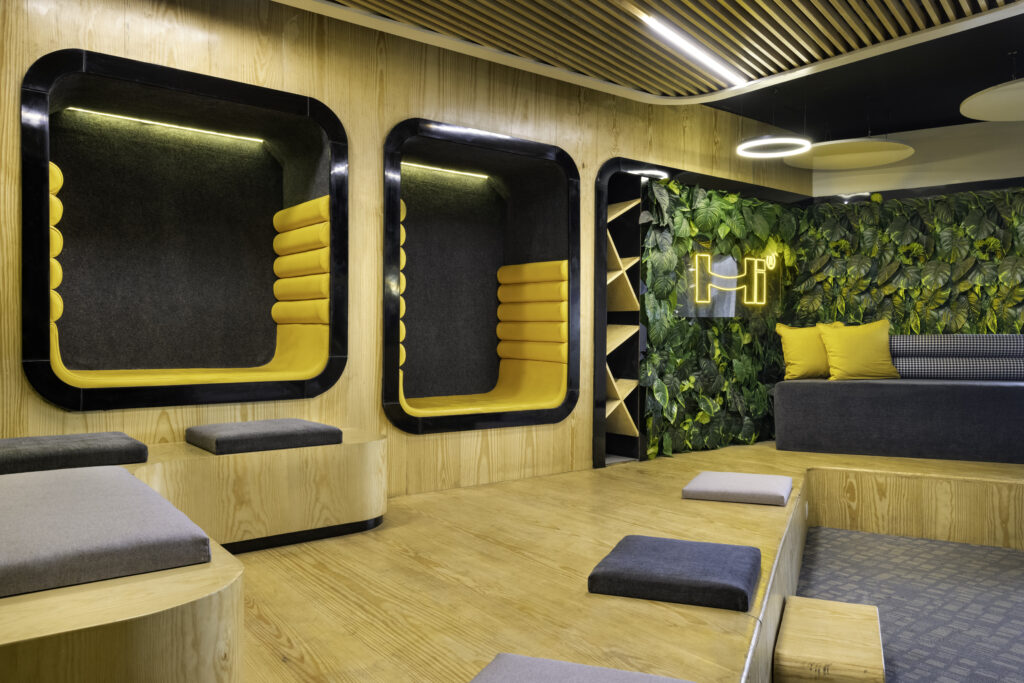
Mastering Agility: Crafting the Future Workplace
Although it’s a popular concept in the corporate world, AGILITY is much more than just a buzzword.
A company that is nimble welcomes change, renews itself easily, and thrives in a setting that is changing quickly.

However, organizations have misused the phrase because of a desire to self-identify as agile.
The physical workspace, corporate culture, technology, and leadership must all support change and progress for a firm to be considered really agile.
The benefits of agile working
Your employees will be able to adapt to change more quickly with an agile business model, and the adaptability of agile work practices will help you draw in younger generations of top talent.
1- Respond to change:
In our fast-paced world, things are always changing quickly. New technologies come out all the time, new products are being made faster than ever, and even how we live and how our society works can change very suddenly.
To keep up and do well even when things are uncertain, your company can use a flexible way of working, like being agile.
Being agile means being able to adjust and change easily. Instead of having strict rules and ways of doing things, you can be more flexible and quicker to react. This way, your company can handle unexpected changes and turn them into opportunities for growth.
To be agile, your company can make teams that can make decisions on their own. You can try new things and learn from them, even if they don’t work out perfectly. It’s like learning from mistakes and using those lessons to get better.
2- Space optimization:
Make the most out of your office layout by adding a touch of flexibility to it. Flexible office design is like giving your workspace the ability to grow and change as your business does. This smart approach lets you make the best use of your work area not only for today but also for the days to come.
Imagine your office layout as a puzzle that can be rearranged to fit different shapes. With a flexible design, you’re essentially putting together a puzzle that can evolve over time. As your business expands or shifts its focus, you can adjust the pieces of your workspace to match those changes.
This adaptability is like having a versatile toolkit that you can use as your needs change. Need more collaborative spaces? No problem. Want to create more private work areas? You got it. With a flexible design, your office can transform to match the demands of your business journey.
3- Attract talent:
The workplace landscape has undergone a notable shift due to the changing preferences of younger generations. These shifts are not mere nuances; they represent a transformative force that is reshaping how we approach work and business. One significant aspect of this transformation is the growing demand for flexibility, a hallmark of the evolving work ethos.
Research has shed light on this trend, revealing that a substantial 70% of Millennials – a generation at the forefront of this shift – actively seek flexibility when considering new job opportunities. This is more than a mere preference; it’s a statement of values. Young professionals are increasingly valuing the ability to balance their personal lives with their professional commitments, seeking an environment that offers room for both growth and autonomy.
The rise of flexibility as a key criterion for job selection underscores a profound transformation in the workplace ecosystem. It is a signal that the traditional nine-to-five, rigidly structured work model is giving way to a more adaptable and accommodating approach. Organizations that recognize and respond to this shift are positioning themselves as magnets for top talent, drawing in individuals who align with their forward-thinking ethos.
Looking ahead, the significance of this transformation becomes even clearer. By the year 2025, projections indicate that Millennials will constitute a staggering 75% of the global workforce. This projection underscores the inevitability of this shift and the need for organizations to embrace agility as a core tenet of their work culture.
How to achieve agility?
In the dynamic realm of business, those that truly embody agility don’t merely tolerate change; they wholeheartedly embrace it as an opportunity for metamorphosis. This distinct mindset is the hallmark of organizations that are not just surviving but thriving in the face of evolving landscapes. It’s akin to seeing change as a chisel that sculpts a business into a masterpiece of innovation and resilience.
To facilitate this transformative journey, flexibility becomes an essential pillar. It’s not just a nice-to-have; it’s a strategic necessity. This flexibility extends its arms not only to the virtual realms of operations and technology but also reaches out to shape the very physical workspace where ideas are conceived and strategies are executed. It’s the understanding that a workspace isn’t static but a living, breathing organism that must evolve in tandem with the business itself.
Physical agility
Agile workspaces: dynamic businesses need dynamic space
Your office is the perfect place to start your exploration of agile working.
An office that can accept a variety of work environments and styles is essential for an agile organization so that employees have the freedom to work how and where they want. Agility is a perpetual goal and a shifting target because change and uncertainty are always present.
Can your breakout area quickly be converted into a conference room or a working area? Do you have adaptable workstations that are functional and meet your needs? Is your workplace set up so that you can work there?
The role of technology
In the modern business landscape, the term “digital competence” has become synonymous with a crucial trait: workplace agility. It’s like having a versatile toolkit that enables organizations to navigate the ever-changing currents of today’s dynamic work environment. Technology, in this context, emerges as more than just a tool; it becomes a linchpin for organizations striving to operate in a truly agile manner.
The symbiotic relationship between digital competence and workplace agility is underscored by the shifting dynamics of how work is done. A significant paradigm shift has occurred, with more individuals embracing remote work than ever before. This transformation is like a ripple effect that has expanded the boundaries of traditional office spaces, creating a dispersed workforce that spans geographical distances.
In this distributed landscape, technology takes center stage as the connective tissue that binds the workforce together. It’s not just about sending emails or conducting virtual meetings; it’s about having the digital prowess to seamlessly collaborate, communicate, and share information across different locations and time zones. Digital competence enables employees to transcend physical limitations, fostering a sense of connectivity that transcends distance.
The connected economy
At the heart of every business lies the intricate dance of interactions between people. These connections are the threads that weave the fabric of collaboration, innovation, and progress. In an age where geographical boundaries are fading, technology emerges as the modern-day magician, conjuring the power to preserve these personal connections, bridging the gap of distance as we embark on a journey towards more flexible and dynamic workstyles.
Technology is not just a set of tools; it’s a bridge that spans the chasm of physical separation. It’s like a virtual handshake that transcends miles, enabling colleagues, partners, and clients to come together in a digital realm that knows no borders. Just as a web of constellations connects distant stars, technology interlaces individuals across different locations, enabling the exchange of ideas, insights, and collaboration that knows no boundaries.
Tech-enabled hot desking
Hot desking can cause unsteadiness just by mentioning it. Employees should feel at ease adopting flexible work methods thanks to technology. Employees can now use new hot desking apps to find a free desk or meeting space from their phone and even reserve a workplace before they arrive at work.
Agile is a way of doing business. It’s something you do every day. And it’s not just for technology companies! Companies of any size can learn from an agile philosophy – it doesn’t matter what business you’re in. Agility means constantly looking for new ways to improve the people, processes, technology, and culture that make up your company. You need to be open to all these things changing, and be ready for them if they do! To truly succeed in today’s world of rapid change you have to be agile.
Discover the true essence of agility beyond its buzzword status. Agility is not just about adaptability; it’s about thriving in a rapidly changing environment. While many organizations claim to be agile, true agility requires alignment across physical workspace, culture, technology, and leadership.
Visit our website to learn how embracing agility can transform your organization’s dynamics and attract top talent. If you’re ready to create a workplace that fosters innovation, adaptability, and growth, contact us today.

